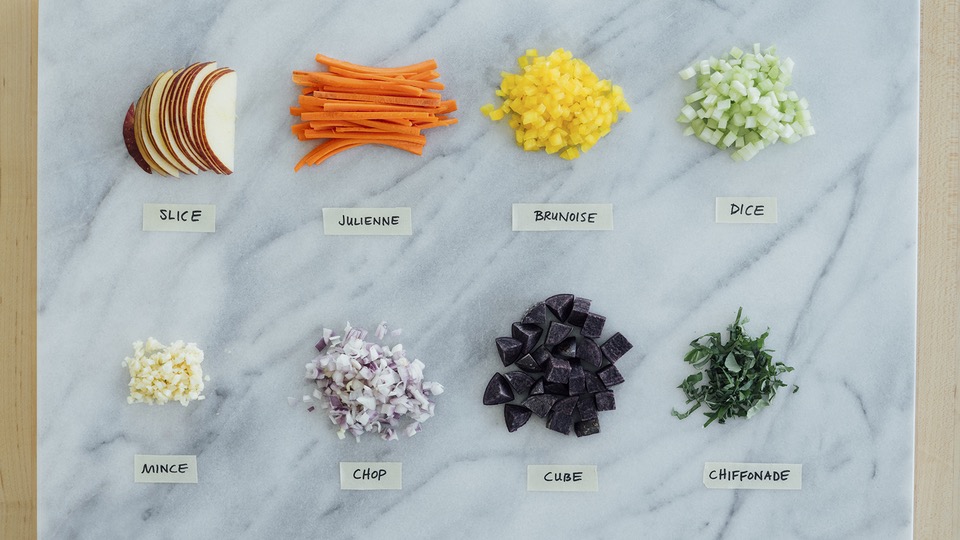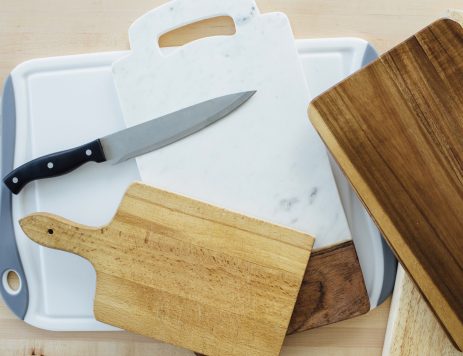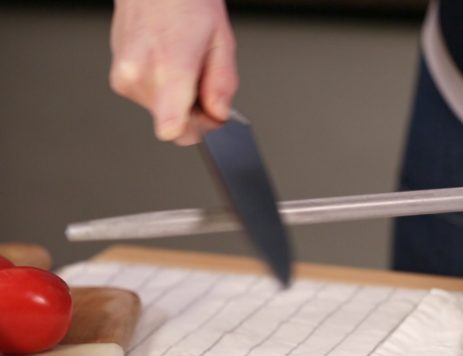
From Chiffonade to Julienne: A Guide to Culinary Cutting Terms
Every professional chef knows that the shape and size of an ingredient can make or break a dish. Why? Because ingredients cut into uniform pieces at an appropriate size not only cook more easily, but also taste better.
Before you prep your next meal, practice these eight culinary cutting terms and master the art of slicing and dicing once and for all.

1. Brunoise
Recommended Tool: Chef’s knife
To do a brunoise cut, the food must first be julienned then turned a quarter and diced again to create approximately 1/8-inch cubes. This cutting technique is ideal for carrots, onions, leeks, and celery, but can also be used with bell peppers and hard root vegetables like beets and turnips. Steer clear of this cut when preparing softer vegetables like green beans and cauliflower.

2. Chiffonade
Recommended Tool: Chef’s or paring knife
The chiffonade method is best for cutting herbs into long ribbons. Stack fresh basil or mint leaves, roll them up tight, and cut across hamburger style. This technique also works well for leafy greens like spinach, collards, and kale.
3. Chop
Recommended Tool: Chef’s knife
Used for a variety of foods, chopping is a casual, imprecise term that simply means to roughly cut food into bite-sized pieces.

4. Cube
Recommended Tool: Chef’s knife
Using a more precise method than chopping, cubed ingredients are cut to a uniform size (e.g. “1/2-inch cube”). This cut is used with many foods, from potatoes to meats to bread.
5. Dice
Recommended Tool: Chef’s knife
Generally smaller than a standard cube, the dice cut also creates uniform squares for even cooking and a polished look. Dicing is often used to make a classic salsa or mirepoix (a mix of carrots, onions, and celery).

6. Julienne/French Cut
Recommended Tool: Chef’s or paring knife
In julienne (or French) cut, the ingredient is cut into long, uniform strips like matchsticks. Julienne cut is often used for salad ingredients and green veggies, like cucumbers, bell peppers, and zucchini.

7. Mince
Recommended Tool: Chef’s knife or food processor
Minced ingredients are cut very, very finely. Mincing is the ideal cutting technique for aromatics, like onion, garlic, and ginger, where a paste-like consistency is a desirable end result.

8. Slice
Recommended Tool: Chef’s, paring, or serrated knife
Slicing is a general term that means to cut across the grain into thin, uniform pieces. Almost every fruit or vegetable can be sliced, as well as other ingredients like cheese and bread.



